Email segmentation is the process of separating contact lists into smaller sections according to shared characteristics. Marketers can then target different segments with tailored email campaigns based on what they know about subscribers.
An effective email segmentation strategy helps you send the right message to the right people. This guide explains how you can use list segmentation for more targeted email marketing campaigns.
Email segmentation is key to boosting engagement and improving campaign results. In fact, a good email segmentation strategy can help you drive sales and cultivate customer loyalty.
Without email marketing segmentation, subscribers may ignore your messages, mark them as spam, or unsubscribe all together.
By segmenting your lists into smaller groups with shared characteristics, you can send more relevant email campaigns at scale.
Learn more about the best email segmentation strategies and how your business can reap the benefits.
Email segmentation: Table of contents
What is email segmentation?
Email segmentation means putting your subscribers in various target groups base don their behavior, preferences, or other traits (e.g. demographics). It's done in your email software where you usually have subscriber management tools.
These smaller groups allow you to create narrow, better-targeted campaigns that hit right home.
Benefits of email marketing segmentation
Email list segmentation helps you reach your target audience with email content that is relevant to them and their needs. Here are the main benefits of using segmentation as part of your email marketing strategy.
Better campaign results
Email list segmentation is important because your audience likely isn’t uniform. Your contacts may have different interests or needs. In this case, a one-size-fits-all approach is neither effective nor efficient.
More relevant emails means a better response from subscribers. If your email subject line catches their interest they’ll be more likely to open it. This leads to higher open rates, click-through rates, and conversion rates.
With email segmentation, you can send specific emails to specific segments. This means more personalized email campaigns, which often leads to better results.
In contrast, a blanket email campaign without segmentation can never satisfy everyone on your list. And if contacts regularly receive emails that don’t interest them, they’re more likely to unsubscribe.
Improved deliverability
In the long term, email segmentation is good for deliverability. That’s because segmentation improves engagement. It also decreases the likelihood of recipients marking your emails as spam. This can greatly impact your sender reputation.
By targeting contacts where your campaign will have the most impact, you’ll avoid harming your performance statistics and in turn your future deliverability.
Stronger customer relationships
Email marketing segmentation is key to building strong customer relationships. You can’t connect with individual subscribers through generic email campaigns. To sustain their interest, the recipient needs to feel like your message is written for them.
By consistently sending content that speaks to your audience on a personal level, you’ll build trust in your brand. And this improves customer loyalty, leading to repeat purchases and higher revenue..
Better customer data
The process of segmenting your campaigns helps deepen your understanding of your target audience. For example, you can test which content works for different segments and identify groups with the best engagement to determine your most valuable customers.
With better customer data at your disposal, it’s easier for you to send relevant content and improve the customer experience.
Types of email segmentation
Here are the main types of email list segmentation:
Demographic segmentation
Segmenting by demographics is a common place to start since it’s based on more concrete information.
Demographic segmentation factors include:
- Age
- Gender identity
- Income
- Job title or organization type
Psychographic segmentation
Psychographic segmentation goes a step further than demographics as you consider not just who a contact is but the psychological factors motivating consumer behavior.
These may include:
- Interests
- Lifestyle
- Values
Behavioral segmentation
The actions contacts take (or don’t take) also offer clues about their interest in your company’s offer.
Here are some activities to track for segmentation:
- Email engagement metrics like open rates and clicks
- Interactions with your website
- Purchase history
- Use of your product or service
Geographic segmentation
This is a key segmentation strategy for stores with multiple geographic locations or businesses with an international audience.
You might group contacts by:
- Country, region, town, or zip code
- Time zone
- Language
10 email segmentation strategies to target your campaigns
As you’ve seen above, there are endless variables you could use to divide up your email list. The key is to find the ones that have the most impact on how people interact with your business.
Here are just a few different ways to segment your email lists.
1. Welcome new subscribers
Target new subscribers using marketing automation. One way to do this is to craft a series of welcome emails. These emails will introduce them to your brand and feed their interest in what you have to offer.
2. Reward loyal customers
By acknowledging long-term, regular customers you can get even more value from them. Make them feel special with VIP offers like early access to new products.
You might also celebrate special anniversaries, including their first year as a loyal customer — and what better way to do this than with an exclusive discount?
3. Win back inactive customers
Disengaged contacts need some extra attention if you want to regain their interest. First target subscribers with a low email engagement. Then grab their attention with a reactivation email. This might include a special offer or a feedback survey.
4. Tailor content based on purchase history
Segment customers with their purchase patterns in mind. You might want to notify them of new products or limited-time discounts related to what they’ve bought in the past. Or, send post-purchase emails with product use and maintenance tips.
You can collect purchase history data via customer loyalty programs. It’s a great way to get to know your buyer personas and propose content that’s relevant to them.
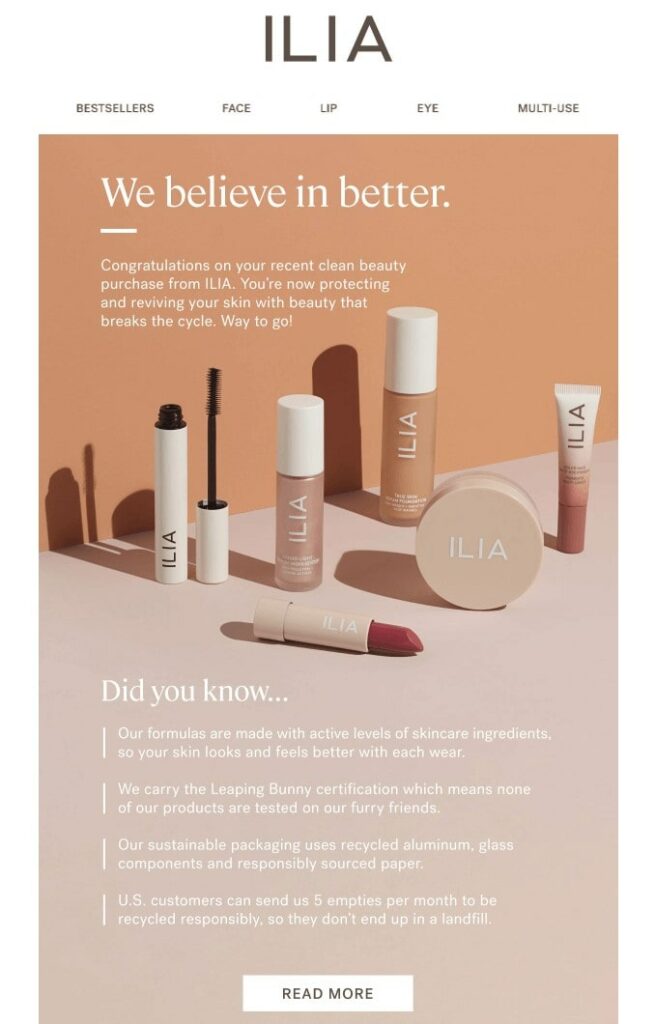
5. Prevent lost sales with abandoned cart emails
Cart abandonment is a common problem in ecommerce. Some customers will get as far as adding an item to their online shopping cart but fail to go through with the purchase.
But sometimes, all they need is a quick reminder at the top of their inbox. You can target these shoppers with an abandoned cart email to encourage them to buy.
6. Segment by company or job title
When it comes to B2B email marketing, it’s useful to target contacts based on their job title or company profile.
Just as B2C businesses use demographic data to segment customers, you can categorize companies by shared traits. For example, the size of a company will influence their needs, budget, and what they’re looking for from your brand.
You can also tailor emails with industry-specific content. This way you can highlight how your offer addresses each company’s unique pain points
7. Target customers based on their stage in the sales funnel
By segmenting your campaigns based on where a contact is in their customer journey you’re more likely to move them to the next stage in the sales funnel.
For newly acquired leads who are still in the phase of discovering your brand, you need to build trust before directly promoting your offer. You can do this through high-value, educational content that showcases your expertise.
As contacts show signs of interest by interacting with your content, add more product-focused information such as case studies. If engagement continues, you’re ready to push them towards conversion, for example with a demo or free trial offer.

8. Segment contacts based on email or website activity
Send segmented campaigns based on the level of website or email engagement. At one end of the scale are committed clients with a high level of usage. To keep them loyal, find ways to reward them, like offering access to new features or invites to exclusive events.
On the other hand, inactive users might need extra support such as educational content on how to use your product.
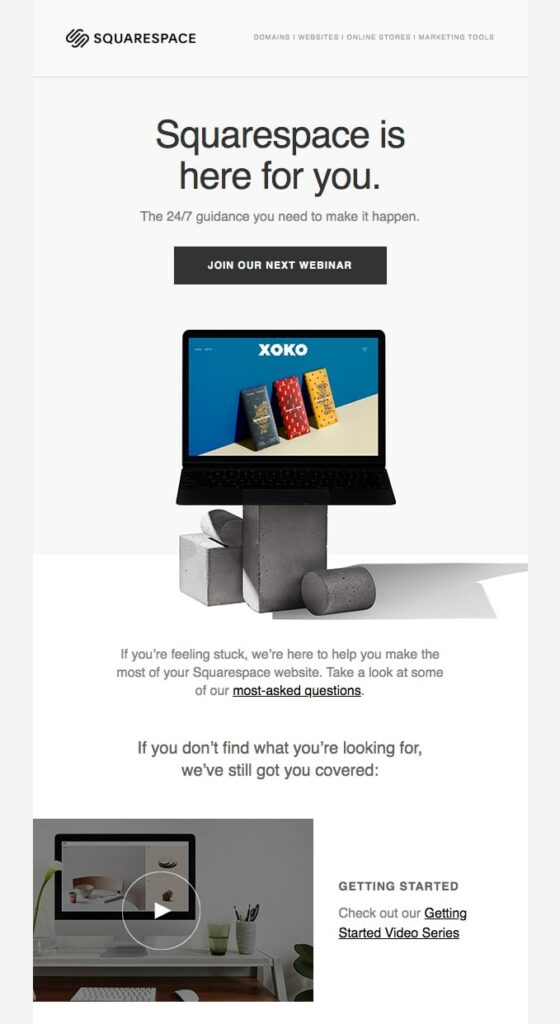
9. Tailor emails based on devices
If your campaign reporting tells you what device subscribers are opening your emails on, you can use this data to improve their experience. To do so, divide your audience into those that favor mobile and those that tend to use desktop. Then send them different email designs optimized for their preferred device.
For example, you could make the following adjustments for mobile users:
- A shorter subject line
- Less text
- Buttons rather than text hyperlinks
- Single rather than multi-column layouts
For more info, check out our article on email design best practices.
10. Target customers based on entry point
When targeting new leads, make your email segments even more precise by taking into account how they discovered your brand. With this information, you can continue to feed them content that’s most likely to keep them engaged.
If you’re using lead magnets like ebooks or webinars to attract subscribers, you could focus future emails around the topic that first caught their interest.
How to get started with email segmentation
Now you have some ideas of email segments to try, it’s time to put them into practice. The steps below will take you through the process.
Determine criteria for segments
Before you jump straight into dividing up your contacts, you need to be clear on exactly what will qualify someone for a certain segment. In some cases this will be obvious, such as if a contact fits a certain demographic. But for more subjective categories like whether or not a customer should be seen as loyal, you’ll need to define your own criteria.
Collect your data
Once you’ve decided on your segments, the next step is to gather the necessary contact information.
Your method will depend on the type of data you need. Sometimes you can ask subscribers directly via your signup form or surveys. However, for behavioral data, you’ll need tracking. For example, Brevo stores data on how subscribers have interacted with your emails. You can also set up tracking for website activity.
Set up your email segmentation
The software you’re using will determine how you go about segmenting your contacts. The main email marketing platforms all have tools for list segmentation but their capabilities vary.
Setting up email segmentation in Brevo
With email marketing platforms like Brevo, you can create segments from your lists by filtering contacts using conditions of your choice.
1. In your Brevo account, go to “Contacts”, click the “Segments” button on the left dash, and then proceed to click "Create a segment".

2. Select the criteria for filtering contacts by clicking "Add a filter". For example, below is a filter to identify contacts added within the last week (found under "Contact details").
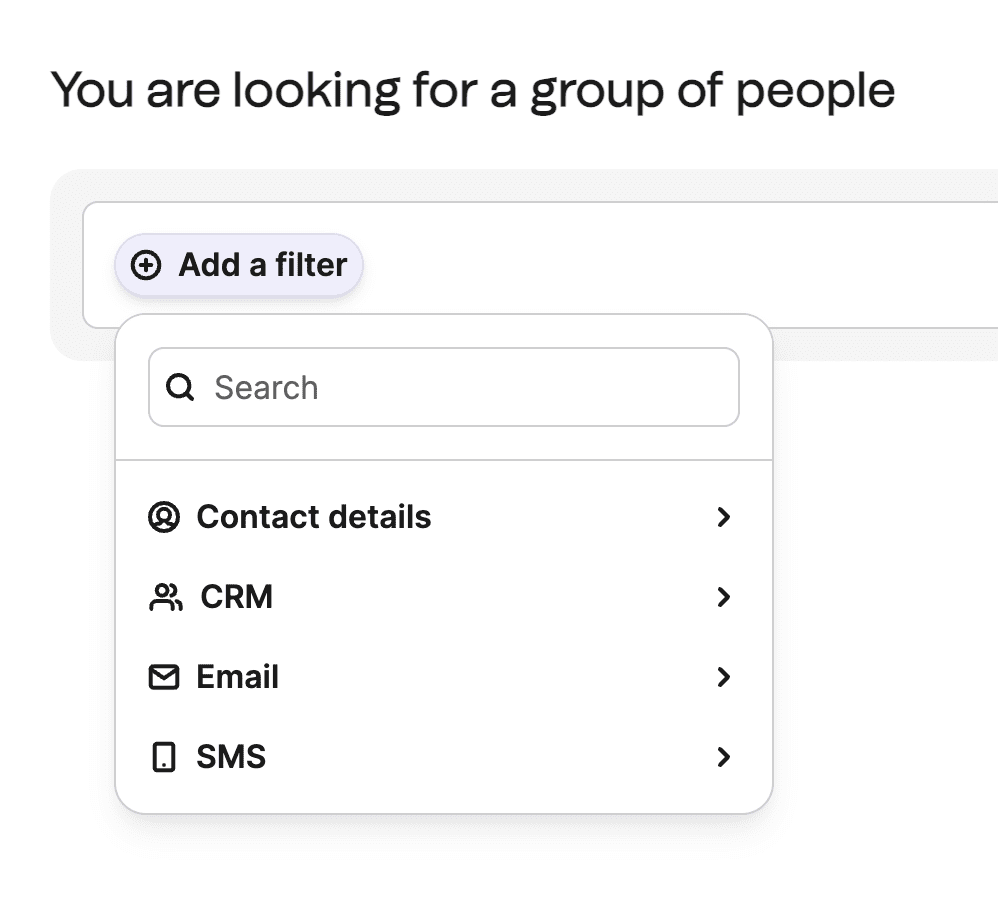
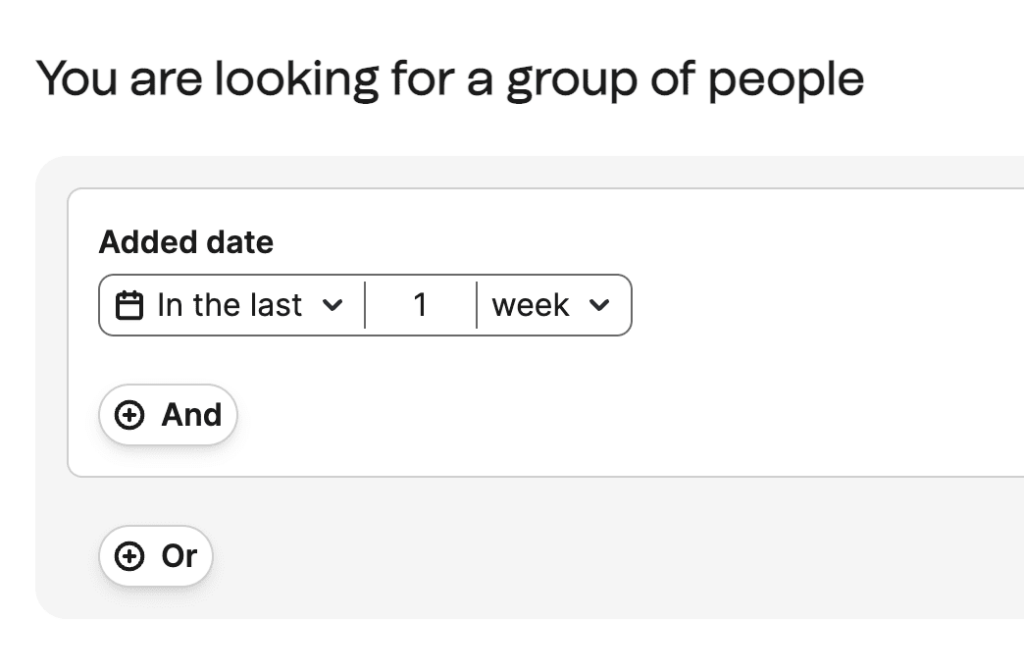
3. Use the “+ And” symbol to add more conditions. If you also want to include contacts that meet separate criteria, click “+ OR”. For example, the filter below will give you both the contacts who have opened at least one of your campaigns and those who have previously clicked on them.
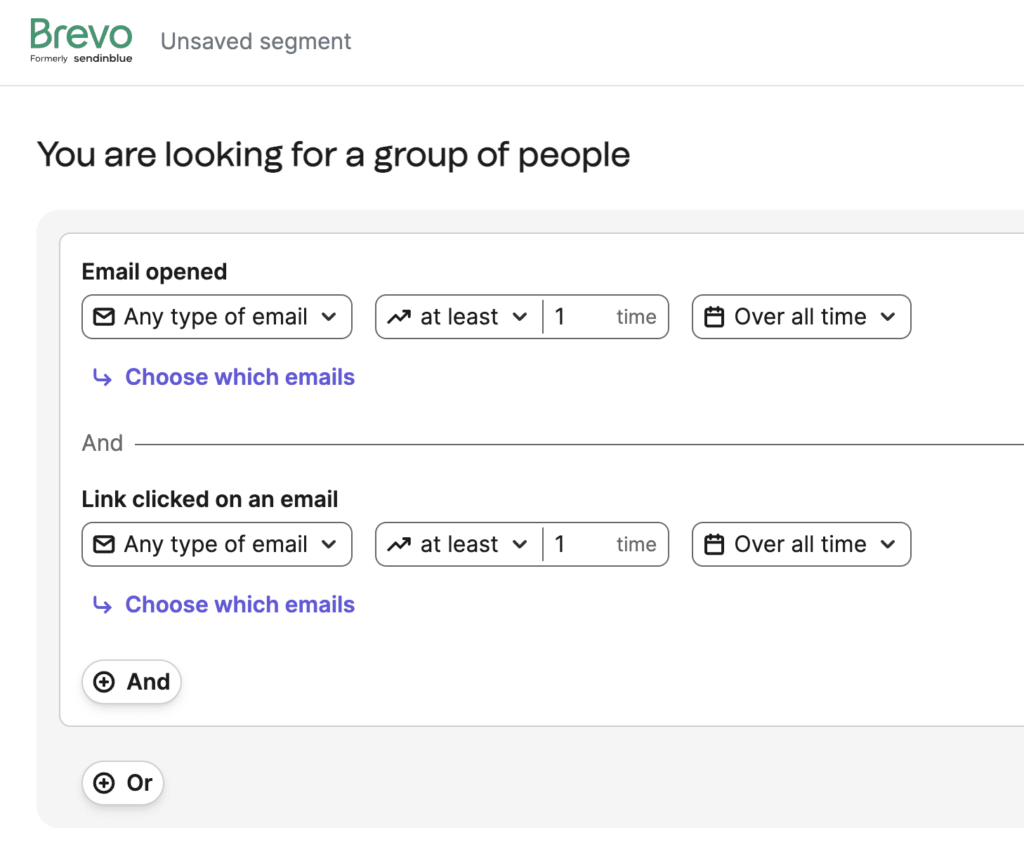
4. Once you’ve added all your criteria, click “Save as segment” to create the segment. You’ll then be able to use it as an audience for campaigns.
Now you have the know-how, it’s time to move away from mass emails towards more personalized experiences for your subscribers. Segmented campaigns often lead to higher engagement and more conversions.
If you need a tool to easily segment your contacts, give Brevo a try. You’ll get full access to segmentation features on the free plan, which includes unlimited contact storage and up to 300 emails per day.






